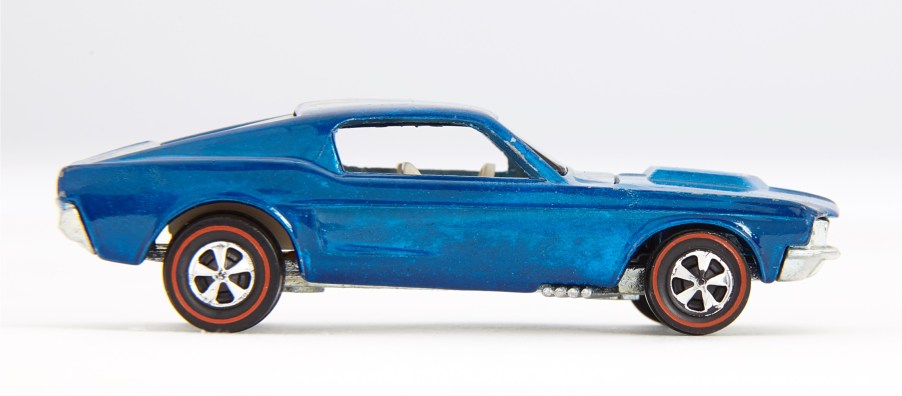
Hot Wheels Turned a Failed Guitar Design Into a Cultural Icon
For car model kits, Lego tends to be the go-to. Some automakers use a similar strategy for selling their cars in the US. Though, for toy cars, it’s hard to find a brand more recognizable or iconic than Mattel’s Hot Wheels. There’s a few on my desk right now.
2018 marked its 50th anniversary, and Chevrolet even partnered with the diecast company to produce special-edition Camaros. But a key part of Hot Wheel’s early success comes from a Mattel failure.
The Hot Wheels story

In 1966, the best-selling toy cars were made by British company Matchbox. But Elliot and Ruth Handler, Mattel’s founders, thought their company could take on the best. So they gathered a team, which included GM car designers and an actual rocket scientist, to figure out strategies and designs.
As Automobile Magazine and Donut Media explain, there were several things that set Hot Wheels apart from other diecasts. One was the vibrant color schemes, like metallic purples and pinks. The designs also stood out: the production-based ones were lower and wider, and even the original ‘Sweet 16’ featured several concept cars that were Mattel originals. But perhaps the biggest difference was the wheel and axle design.
At the time, Matchbox cars used narrow metal wheels and thick metal axles. This made them slow and messed with their handling. In contrast, Hot Wheels used wide plastic wheels, for less friction. In addition, the designers borrowed from a failed Mattel design for a guitar that would never need tuning. The original concept was scrapped because of cost, but the thin metal guitar strings were light-weight and low-drag. Autoweek also reports the axles were bent slightly, to create something like suspension.
As a result, Hot Wheels cars had the speed to match their looks. And 6,000,000+ models and numerous orange tracks later, the cars are still popular with old and young alike.
How the cars are made today
As Petrolicious and Automobile Magazine report, Hot Wheels still employs automobile designers as part of its design team. And, as in the beginning, a significant portion of its yearly releases are Mattel original creations.
But for making scale models of real cars, the design process isn’t as simple as dividing every measurement by 64. Even when Hot Wheels receive official 3D scans and CAD files from the manufacturer, the final toy is different from the production version. In an interview with Automobile, Adam Barry, the senior creative designer for the real sixth-gen Camaro, said, “When you scale something down, it loses its character and its drama, so you have to exaggerate some aspects of the car at that small size to keep its character.”
In addition to vehicle designers, there are also graphic designers. The former sketches the body, while the latter works on the paint and decals. Every single Hot Wheels starts with a sketch, that’s then iterated and refined over time. Once the final design has been approved, and the dimensions laid out, a 3D printer creates a functional prototype. This is then run through several quality tests, including a speed test on a Hot Wheels track, and a clearance test to make sure the vehicle doesn’t catch on said track.
Older Hot Wheels can be very valuable

There have been plenty of limited-run Hot Wheels models over the brand’s lifetime. But Motor1 reports that perhaps the most collectible are the original ‘Sweet 16’, especially the ones made with the redline wheels from 1968-1977. In addition, as Hagerty explains, quite a few prototypes or uniquely colored versions ended up being released to the general public.
These prototypes can be extremely valuable. As Car and Driver reported, Pawn Stars’ toy and Disney expert Joel Magee recently acquired one valued at roughly $100,000. The Enamel White Prototype Custom Camaro is a claimed 1 of 1, with the blue windshield marking Hong Kong as its origin. Mattel made some Hot Wheels there in the early ‘70s, due to US factories being unable to keep up with demand. Road & Track reports the white enamel paint is also special, as it was used only on prototypes as a way of checking for imperfections.
Magee, though, isn’t planning on selling the Camaro. Much like the rest of us, he wants to enjoy handling his Hot Wheels.
Follow more updates from MotorBiscuit on our Facebook page.


